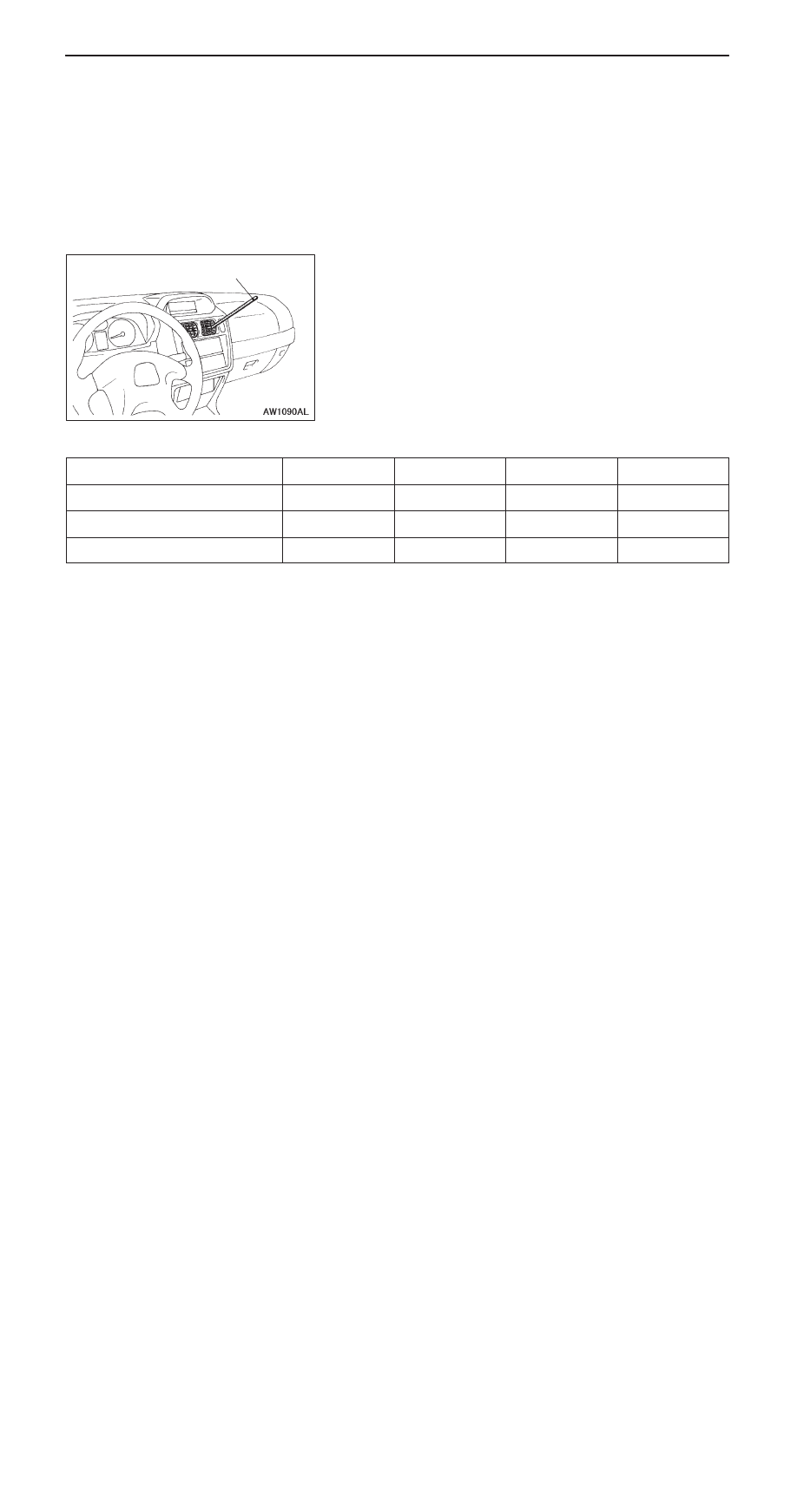Mitsubishi Pajero Pinin. Manual - part 366

HEATER, AIR CONDITIONER AND VENTILATION
–
On-vehicle Service
55-15
7.
Set the controls to the A/C as follows:
A/C switch: A/C – ON position
Mode selection: Face position
Temperature control: Max. cooling position
Air selection: Recirculation position
Blower switch: HI (Fast) position
8.
Adjust engine speed to 1,000 r/min with A/C clutch
engaged.
9.
Engine should be warmed up with doors and windows
closed.
10. Insert a thermometer in the center A/C outlet and operate
the engine for 20 minutes.
11. Note the discharge air temperature.
NOTE
If the clutch cycles, take the reading before the clutch
disengages.
Performance Temperature Chart
Garage ambient temperature
_
C
20
25
35
40
Discharge air temperature
_
C
2.5 – 4.5
2.5 – 4.5
4.0 – 6.5
6.5 – 9.0
Compressor high-pressure kPa
765 – 960
765 – 960
1,325 – 1,420
1,570 – 1,765
Compressor low-pressure kPa
40 – 135
40 – 135
80 – 175
155 – 255
Thermometer